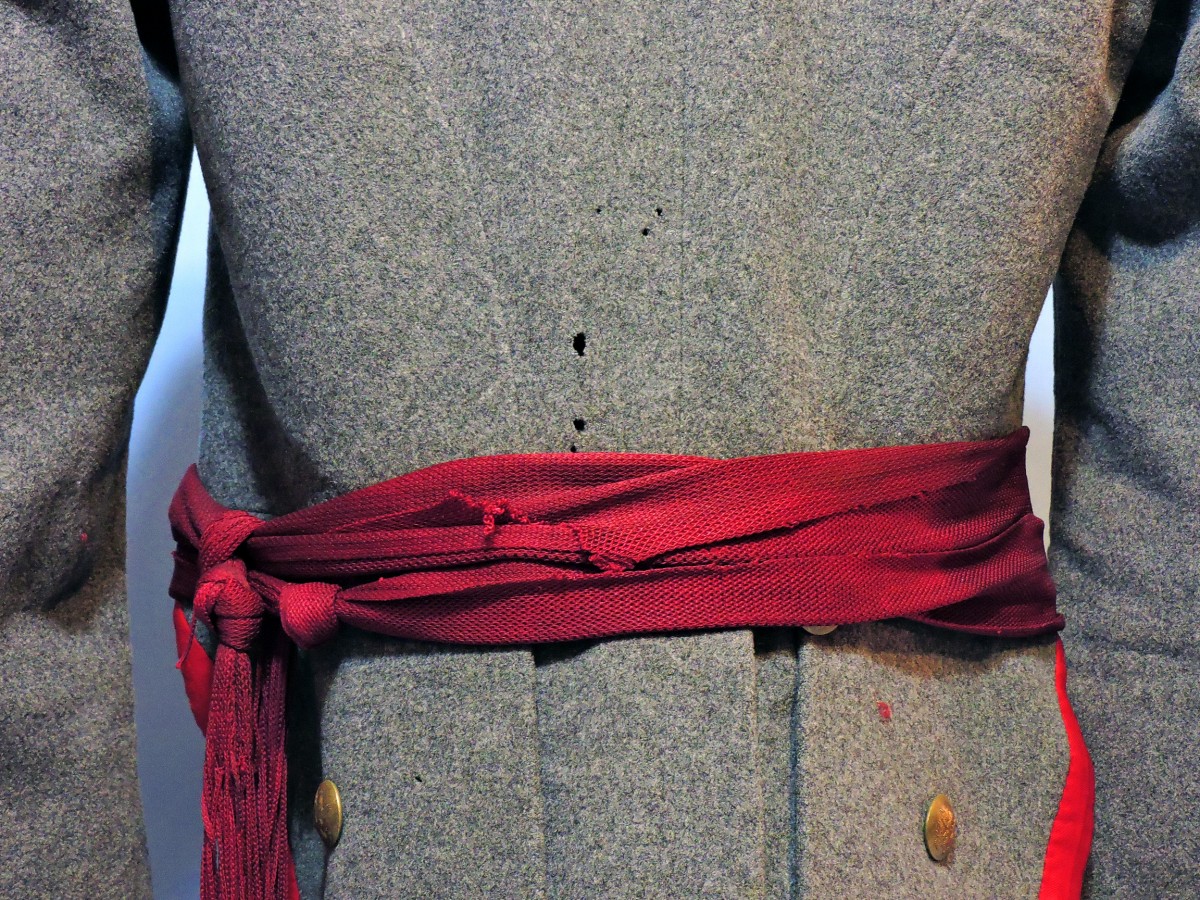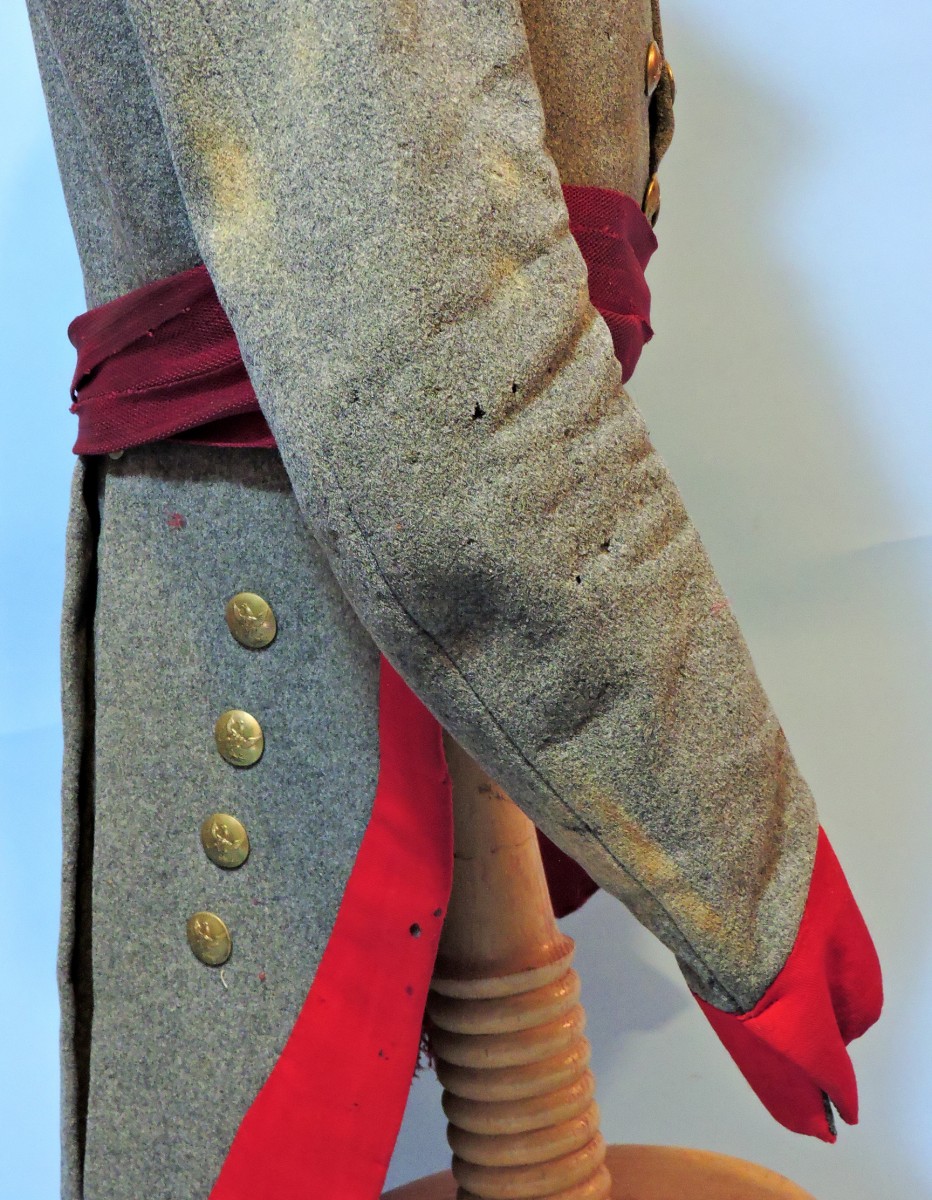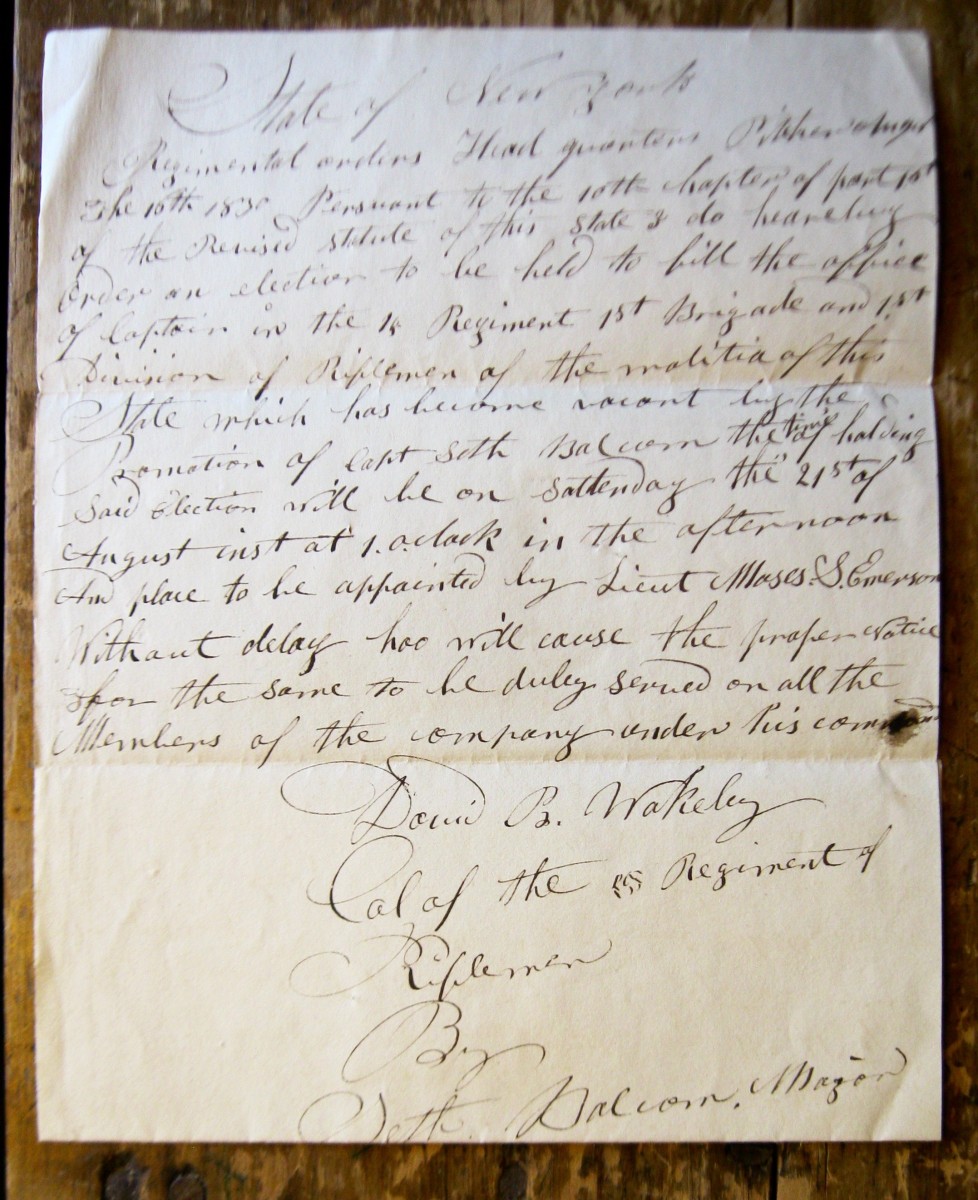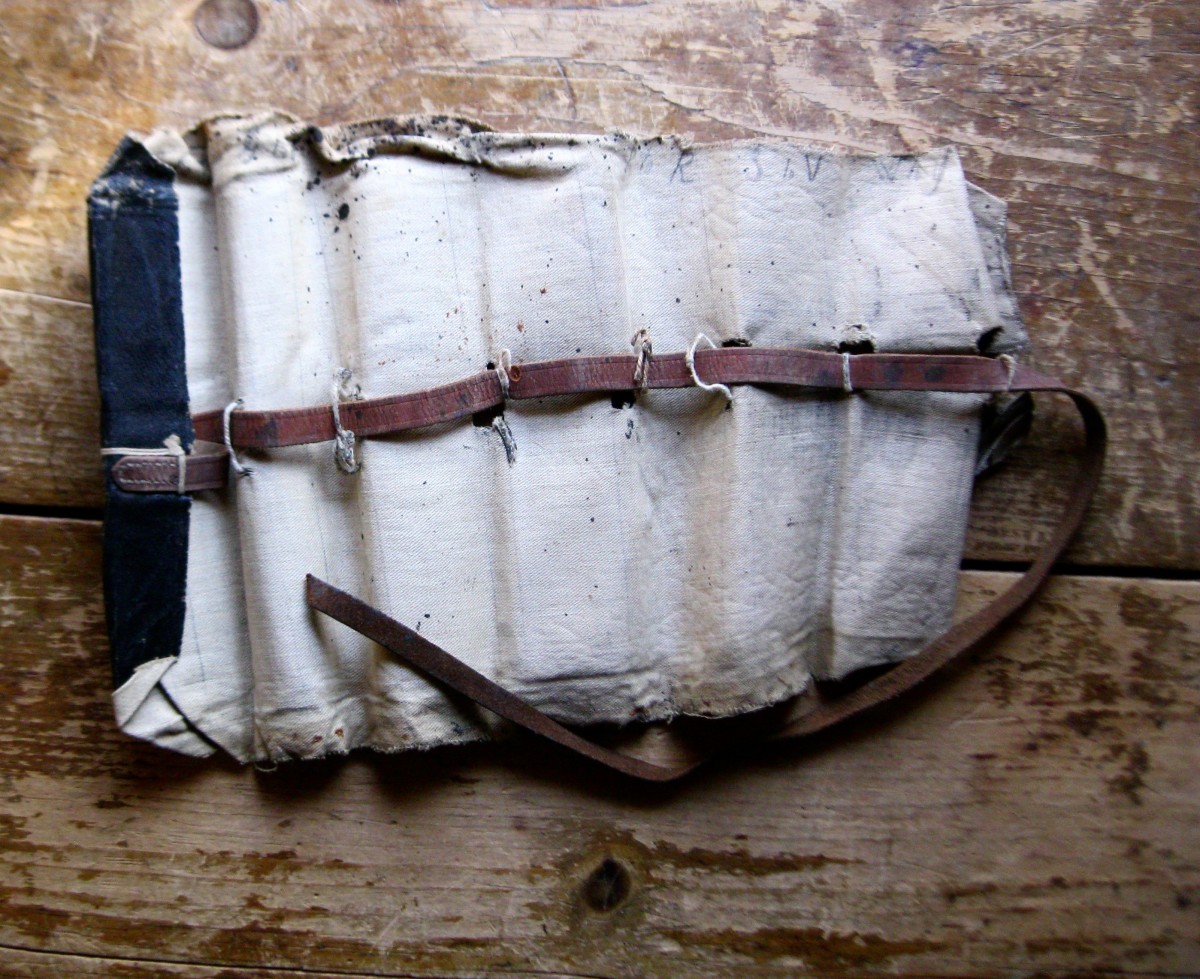- Sorry, this product cannot be purchased.
Coatee and Shako worn by Captain Moses S. Emerson of McDonough, New York, along with documents, trunks, and more from McDonough, New York, 1820s – 1850s and on.
Contact Us About This Product
Description
I know very little about Captain Moses S. Emerson, other than a brief account in the “History of Chenango County, New York,” and the documents accompanying this grouping.
“Moses S. Emerson, a native of Candia, N. H., who removed thence to McDonough in 1818. He was a carpenter and joiner and mill-wright, and followed that vocation in connection with the management of a small farm of thirty acres, in the village of McDonough, till 1846. He died of apoplexy Sept. 25, 1856, aged 51, while on a visit to his native place, but his remains were brought here for interment. Eliza, his wife, died March 22, 1874, aged 65. He had four children besides Varanes C., Maria T., who died in infancy, Elizabeth S., widow of David R. Randall, living in Wilkesbarre, Penn., Lucinda R., who married Jonathan C. Jones, of German, where she lived and died in May, 1878, and Herbert, who is now living on the homestead.”
From the military documents in this collection, it is known that Moses Emerson had enlisted in a company of light infantry in 1822 in McDonough, and promoted to corporal (circa- 1825), and a 3rd sergeant in the same company of light infantry, of the 191st Regiment, 32nd Brigade, 17th Division in the Militia of the State of New York (1828).
There are three commissions for Emerson; appointment dated May 1, 1829, to Ensign of the company of Riflemen, 25th Regiment, 1st Brigade, 1st Division of Riflemen of the Militia of New York. Initially, this company was known as the McDonough Fensible Rifle Company in 1830. The next appointment was making Emerson a lieutenant in the same company, dated March 1, 1830, and then on August of the same year, he was promoted to Captain, commanding the company.
In a manuscript Brigade Orders of Sept. 7, 1833, Brigadier General Albert T. Dunham, accepted Moses S. Emerson’s resignation, and was “honourably discharged from the said office.”
The documents are mostly from the period of Emerson’s command of the company, with documents for; permission to be absent by company members, muster rolls, company- regiment- and brigade orders, notices of NCO’s to contact company members for parades, inspections, musters, etc. Total number of militia documents is 47 pieces.
Captain Emerson’s gray wool, with red cuff and tail facings militia coatee, is triple breasted, and combining all buttons, front and back, including tails, there are 38 coat buttons, and 4 vest sized buttons on the collars. All are one piece, unmarked gilt eagles with “R” in the shield. On the shoulders are black cotton straps, which are 2.5 x 6 inches and I believe represented officer rank. The straps are tattered in some places but mostly there. The coat is in fine condition for its age, with a few minor issues, one being obvious, the split on the cuff at the seam (easily repairable).
The stove pipe shako made of leather, has a squared visor and brass decorative trim in the lower front, and around the crown. Side buttons are a simple star pattern, a common button used in many a militia shakos for that period of the 1820s-40s. A large stamped brass light infantry horn with spread winged eagle above is mounted front center. A leather cockade with small rifleman’s button is mounted above that on the brass trim. Wool worsted cording of red and grey color hangs from the sides with a waffle and duel tassels suspended from the right side mounting ring. The original sweat band remains. Some restoration work was performed on the shako, with the leather being weak, so to prevent any further damage, the leather was treated and an inner leather band was applied to assist in holding the shape. The plume is a correct style for the period, but is a reproduction, replacing what was no doubt lost long ago. The height of the shako is 7 inches. See photos for condition of leather, etc.
In the photo of the uniform there is a red sword sash that I have had for years. It is silk, and is of a simple construction, similar to what would have been used in this era. It gives the uniform a more interesting look, and most likely Emerson had one of his own originally, thus I included it with the group.
There were two trunks that came with this grouping; one is a small wooden dome top mini trunk/ box, painted in period blue paint (with a green hue), that held Emerson’s military papers. The size is 4h x 5w x 9l. The other one is a stage trunk, made of leather, and lined in bed ticking in the upper flap section, having an inner compartment for clothing, and another leather flap protection the lower contents. The lower interior is lined with a decorated cloth, and has the label for an Albany, NY sadler, who apparently made other military accoutrements and headgear. 3 sets of straps and buckles (one off) keep is closed and secure when traveling. There is some decorative tooling on the inner leather flap. The trunk size is 12 wide x 22 long, and a height of about 10 inches. There is an inner lock (no key). Leather handles on either end, and generally in fine condition but having the typical wear to thinner leather sections. See photos for clarification.
Finally, there are about 200 plus personal documents, receipts, early ledger account books (one complete), business cards, other papers from the 1820- 1850’s and some beyond that date. There is a tarred canvas document / receipt organizer that rolls up. A leather strap is used to separate the documents by alphabet. This could have been used for either personal or militia use.
The 1830 account book is 80 pages, fully used, showing what money he took in from his carpentry business, and his creditors, who he purchased goods and services from in that year.
We will bore you with ample photographs!
This is a time capsule for one man’s life, both civilian and military from a small community in New York, between Syracuse and Binghamton. The Town of McDonough, as of the U.S. Census of 2010, recorded a population of just under 900 citizens. It is truly remarkable to think what the population size would have been in Moses Emerson’s era, and just how many militia uniforms, or anything military from the early 1800’s would have survived to this day from that small town.
A colorful, historical, educational archive.
MORE PHOTOS COMING SOON.
Additional information
| Weight | 40 lbs |
|---|---|
| Dimensions | 26 × 26 × 20 in |





























































